In the midst of winter, when flowers are scarce, feathery cassia becomes a focal point in the Southwestern landscape. Masses of fragrant yellow flowers cover this Australian native, which thrives in arid climates.
The gray-green foliage has a lacy texture and looks great paired with larger-leaved plants and succulents. Feathery cassia is drought tolerant and performs well in hot, sunny locations but can handle light shade too.
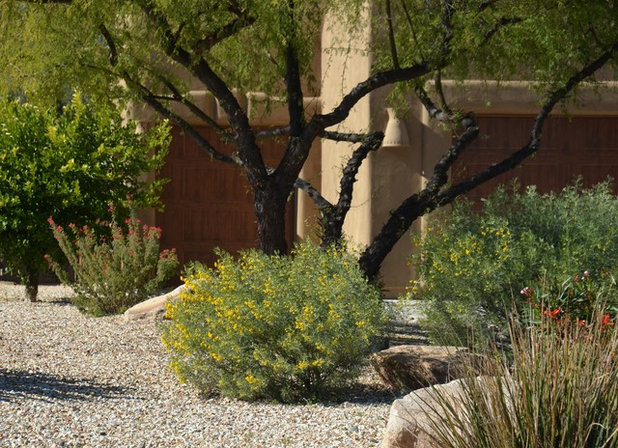
Noelle Johnson Landscape Consulting
Botanical name: Senna artemisioides (formerly
Cassia artemisioides)
Common name: Feathery cassia
Origin: Native to the arid regions of Australia
Where it will grow: Hardy to 15 degrees Fahrenheit (USDA zone 8; find your zone)
Water requirement: Low
Light requirement: Full, reflected sun to light shade
Mature size: 6 to 8 feet tall and wide
Benefits and tolerances: Drought tolerant once established, but does best when watered once a week in summer and every two weeks in spring and fall; water once a month in winter
Seasonal interest: Fragrant, yellow flowers in winter and spring
When to plant: Spring and fall; can be grown from seed or transplants
Shown: Feathery cassia growing underneath a sweet acacia tree
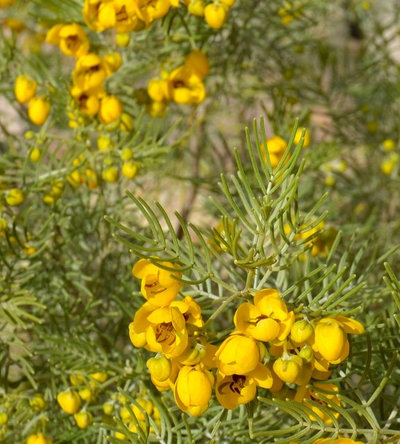
Noelle Johnson Landscape Consulting
The lacy foliage of feathery cassia is made up of narrow, gray-green, needle-like leaflets known as phyllodes. The foliage has a silvery sheen when it’s blown by the wind, which adds beauty to the landscape even when the plant is not in flower.
Flowers are borne in clusters that cover this shrub in masses of golden-yellow color in winter and spring. The pea-like flowers aren’t just beautiful; they are fragrant too.
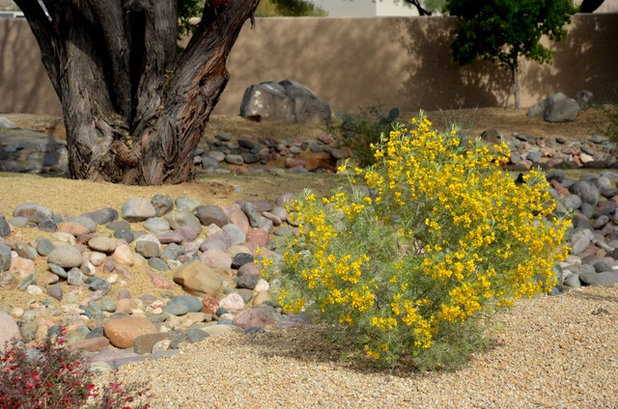
Noelle Johnson Landscape Consulting
After flowering ends in late spring, lime-green seedpods soon follow; they darken to brown. The seedpods are often removed by pruning in late spring, which improves the appearance of the shrub.
This shrub has a lovely rounded shape when allowed to grow to its natural size. However, it can be informally pruned using hand pruners to control its size. Unlike many flowering desert shrubs, feathery cassia does well when sheared once a year after flowering has finished. This is often done to remove the seedpods, which some find unattractive.
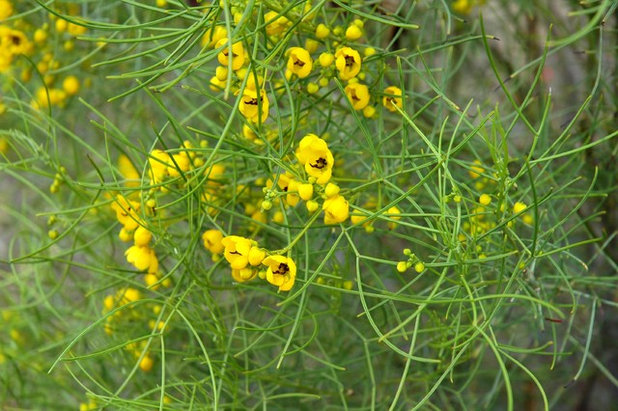
Noelle Johnson Landscape Consulting
Similar in appearance and growth habit to feathery cassia are
silvery cassia (
Senna phyllodinea), which has silver-gray phyllodes, and
desert cassia (
Senna nemophila),
which features narrow, bright green phyllodes. Both of these shrubs can be used interchangeably with feathery cassia.
Shown: Desert cassia (
Senna nemophila)
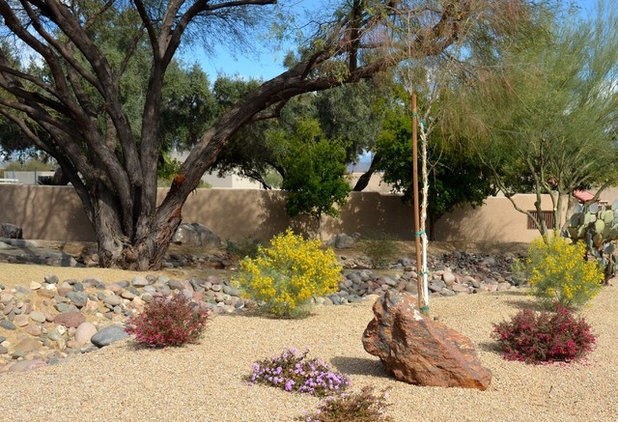
Noelle Johnson Landscape Consulting
How to use it. Feathery cassia makes a great background plant; its silvery foliage can provide contrast for darker green plants, such as autumn sage, Valentine bush
and red yucca.
To add contrasting textures to the landscape, pair feathery cassia with succulents such as agave or prickly pear, which have thick leaves and pads that show off the lacy foliage of this shrub to great effect.
Feathery cassia looks best in informal landscapes — it does not lend itself to formal hedging.
Shown: A newly planted landscape with feathery cassia, Valentine bush
and purple trailing lantana (
Lantana montevidensis)
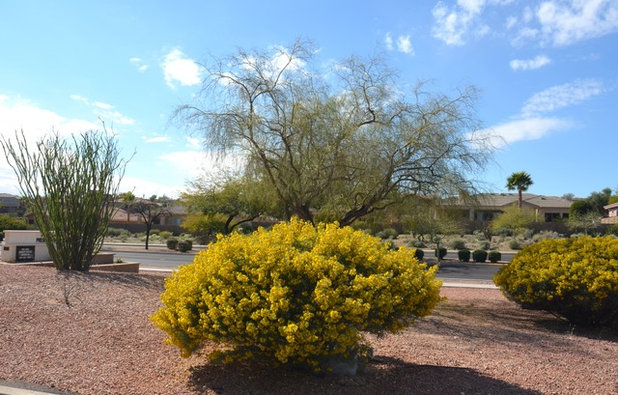
Noelle Johnson Landscape Consulting
Planting notes. Plant in well-drained soil. Feathery cassia does best when planted in full sun but can grow in filtered shade, where it will produce fewer flowers.
This lacy shrub is not fussy and does not require supplemental fertilizer or soil amendments.
Allow enough room for it to grow to its full size, so you won’t need to repeatedly prune it throughout the year. Prune once flowering has ended to remove the seedpods, if desired. Avoid pruning more than once a year, so you don’t remove the flower buds that begin to form in August.
More: 6 Flowers for Gorgeous Winter Garden Color





